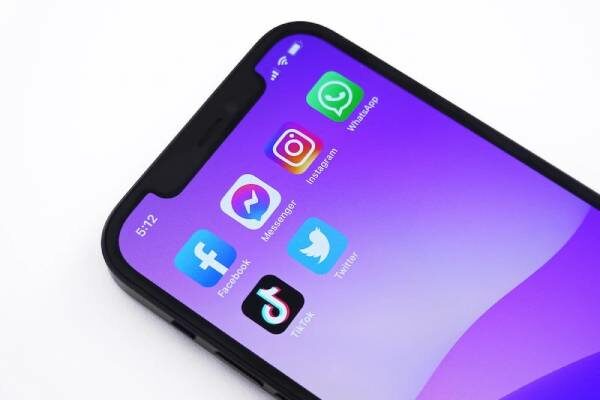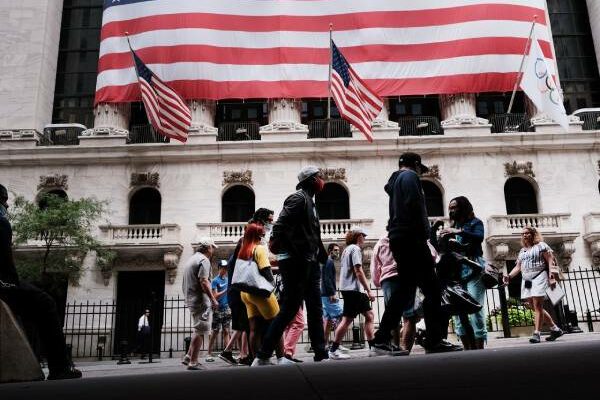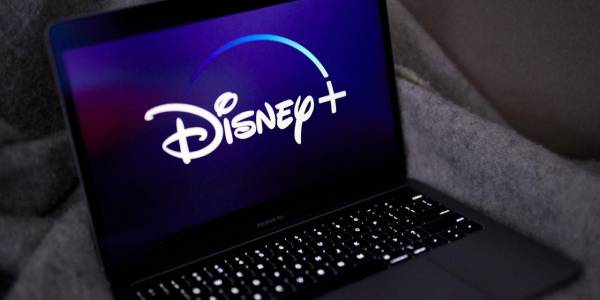Guardians should continue to stand by to discover when their most youthful youngsters can get a Covid-19 immunization.
Pfizer and BioNTech documented a solicitation with the US Food and Drug Administration in the main seven day stretch of February for a crisis use approval of their antibody in kids a half year to 5 years of age. The FDA’s Vaccines and Related Biological Products Advisory Committee was planned to meet February 15 to go over information from antibody preliminaries and make a suggestion and regardless of whether a two-portion immunization routine ought to be approved.
U.S. wellbeing controllers said they need more opportunity to choose whether to approve the Covid-19 immunization from Pfizer Inc. also BioNTech SE for youngsters under 5 years, after the drugmakers told them of extra information from a proceeding with study.
The Food and Drug Administration said Friday that it was postponing a choice to consider information from testing under way assessing a third portion of the immunization, in addition to the initial two.
The organization didn’t determine the extra information that it had gotten and had incited its activity, yet it said it took the action to remember information for the third portion in an approval choice.
A United States choice on Pfizer and BioNTech’s COVID-19 antibody for kids a half year through four years old has been deferred for somewhere around two months after the Food and Drug Administration (FDA) said it required more information.
The FDA had wanted to settle on a choice on the antibody in light of early preliminary information as a result of what it had called an extraordinary general wellbeing need because of the flood in contaminations brought about by the Omicron variation of the Covid. The choice was scheduled for the following week, with a rollout beginning when February 21.
In any case, the FDA reported Friday that it had deferred the gathering in light of the fact that “new information have as of late arisen.”
The information upheld the security of the antibodies however showed disheartening viability, the announced Friday.
The organization needs to see information from a continuous preliminary of a third antibody portion in these more youthful kids to push ahead with crisis use approval, Dr. Peter Marks, head of the FDA’s Center for Biologics Evaluation and Research, said during a news instructions.
“The information that we saw caused us to understand that we expected to see information from a third portion in the continuous preliminary to make an assurance that we could continue with doing an approval,” said Peter Marks, who coordinates the FDA’s immunizations division.
On Friday, the organization said it had surveyed new preliminary data that had come in since Pfizer and BioNTech’s solicitation for crisis authorisation and concluded it required more information prior to pushing ahead.
The FDA said guardians tensely anticipating the antibody for the approximately 18 million youngsters in the age gathering should be consoled that the office is requiring some investment to ensure it satisfies the guideline it has set for authorisation.
Pfizer and BioNTech said Friday that they hope to have information on three dosages accessible toward the beginning of April.
Data came in “so quickly” during the Omicron wave “that right now, it’s a good idea for us to delay until we have the information from the assessment of a third portion prior to making a move,” Marks said.
“The information that we saw caused us to understand that we expected to see information from a third portion as in the continuous preliminary to make the assurance that we could continue with doing an approval.”
The postponement is a sharp difference in pace.
The FDA had been thinking about a solicitation by the organizations to get the utilization free from two portions of the immunization. The office was then going to take a gander at extending the approval to a third portion, should the review show it works securely.
“In the event that something doesn’t fulfill that guideline, we can’t continue forward,” said Dr Peter Marks, overseer of the FDA’s Center for Biologics Evaluation and Research. Marks noticed a portion of the new information that pushed the FDA to postpone the choice was “late-breaking”.
There are around 18 million youngsters ages a half year through 4 years in the United States who might be qualified for the immunization. Jeff Zients, the White House’s Covid reaction facilitator, said Wednesday that arranging was well in progress to carry out immunizations, needles and needles when the FDA settled on an approval choice. A US Centers for Disease Control and Prevention arranging report posted online had said conveyances could start when February 21.
The new move will postpone the rollout of the went for youngsters more youthful than 5, the last age bunch without admittance to inoculation.
Pfizer and BioNTech said they expect results on whether three portions of the immunization works securely toward the beginning of April. Scientists are gathering more information, incorporating from more youngsters in the review who have become contaminated as additional time has elapsed.
Dr. Marks said a portion of these new Covid-19 cases in the review were subjects contaminated with the Omicron variation. He said the FDA chose to look for additional time on the grounds that the information from extra contaminated review subjects was coming in quickly.
Pfizer and BioNTech had submitted information on the initial two dosages of what was arranged as a three-portion routine for this age bunch recently in line with the FDA; they didn’t uncover adequacy information.
The accommodation was astounding on the grounds that in December they said introductory preliminary aftereffects of the lower-portion antibody missed the mark concerning assumptions in two-to four-year-olds and changed their clinical preliminary to test a three-portion form.
The organizations said they would proceed with the preliminary to portion all kids with three shots and expected to have information in April.
Twisting way to approval
In December, Pfizer said that the immunization seemed to safeguard the most youthful youngsters – – babies and little children up to 2 – – at similar levels found in adolescents and youthful grown-ups, cutting manifestations in 90% of children who had the chance. Notwithstanding, the 3-microgram portion didn’t deliver a similar invulnerable reaction in 2-to 5-year-olds.
Counting information from more contaminated review members, he said, could empower the FDA to survey the adequacy of the antibody, as opposed to just hoping to see whether safe reactions produced by the shot are tantamount to those seen in more seasoned individuals. The FDA planned to settle on its choice by checking out the insusceptible reaction.
The declarations came on the day that the FDA was relied upon to deliver a staff survey of the application for use in small kids. All things being equal, the organization didn’t deliver a report and delayed a gathering, booked for the following week, of immunization specialists who prompt the office on administrative solicitations.
Some wellbeing specialists have asked the FDA to hold off on approval in light of the fact that the testing up until this point didn’t see that the immunization created a solid safe reaction in 2-to 4-year-olds, yet just in youngsters under 2.
“This is a three-portion immunization, and they would have been introducing information on the initial two dosages. It’s a good idea to hang tight for the wellbeing and adequacy information on every one of the three portions to be accessible before we settle on a choice with regards to this antibody,” said Dr Paul Offit from Children’s Hospital of Philadelphia.
Offit is an individual from the FDA’s Vaccines and Related Biological Products Advisory Committee that had been booked to decide on whether to suggest authorisation of the went for youngsters under five on Tuesday. The gathering was deferred.
The portion for babies and little youngsters is around 33% of the portion given to kids age 5 to 11 and a 10th the size of the portion given to individuals 12 and more seasoned.
At that point, the organization chose to grow its preliminary to incorporate a third portion, rather than the two dosages more seasoned youngsters and grown-ups get in an essential immunization series.
In any case, high paces of disease and sickness among youngsters from the Omicron variation have permitted the organization to rapidly amass preliminary information. Toward the beginning of February, while it kept on researching a third portion, the organization said it had chosen to submit for approval of the two-portion antibody “with pediatric Covid-19 cases outperforming 10 million and in line with the FDA.”
The pundits say the office should hang tight for consequences of testing a third, or sponsor, portion to check whether that creates an adequate resistant reaction.
Pfizer and BioNTech planned to hang tight for comes about because of testing a sponsor portion prior to looking for FDA approval in youngsters under age 5.
However the FDA asked Pfizer and BioNTech to look for leeway, instead of sitting tight for the sponsor information.
The essential series of the Pfizer/BioNTech antibody has been two portions in all more established age gatherings. In any case, in December, Pfizer changed the plan of its clinical preliminary to test a third portion of the immunization in the age bunch on the grounds that the lower portion created an invulnerable reaction in two-to four-year-olds that was substandard compared to the reaction estimated in those matured 16 to 25 in past clinical preliminaries.
“Considering that the review is progressing at a fast speed, the organizations will hang tight for the three-portion information as Pfizer and BioNTech keep on accepting it might give a more significant level of security in this age bunch,” Pfizer’s news discharge said. “This is likewise upheld by ongoing perceptions of three portion promoter information in a few other age bunches that appears to definitively increase killing neutralizer levels and certifiable immunization insurance for omicron contrasted with the two-portion routine.”
Before the most recent move, the central government had been making arrangements to start conveying the shots. The Centers for Disease Control and Prevention had advised neighborhood wellbeing authorities they should be prepared to accept their first shipments by Feb. 21.
Each portion for the more youthful kids is one-10th the portion given to more established kids and grown-ups.
Rollout of the initial two dosages for little youngsters would have sped up their admittance to a supporter, assuming that third portion were found to work securely and approved, detailed.
Disclaimer: The views, suggestions, and opinions expressed here are the sole responsibility of the experts. No journalist was involved in the writing and production of this article.





